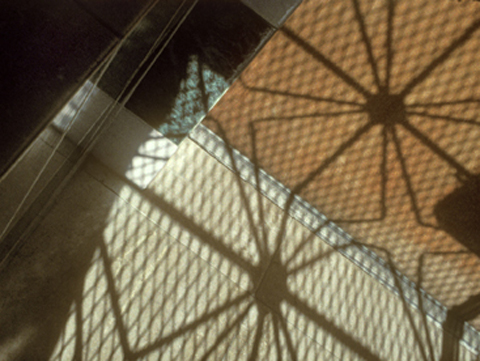
Programmed by Ben Donoghue
“It is the direct connection of light and audience that interests me. The screen continually shifts dimensionally from being an image-window, to a floating energy field, to simply light on the wall. In my films, the black space surrounding the screen is as significant as the square itself. Silence allows these articulations, which are both poetic and sculptural at the same time, to be revealed and appreciated.” — Nathaniel Dorsky
Since the mid-1960s San Francisco-based Nathaniel Dorsky has explored the poetics of cinematic images, creating new potentials for seeing and experiencing through film. Working exclusively with 16mm film — and since 1980 with silent film projected at 18 frames per second (standard sound film is shown at 24 fps) — Dorsky has created a stunning body of work that presents a rigorous and unique perspective on cinema’s potential. The flicker of the slower projection speed and Dorsky’s method of cutting are integral elements of films that wash over the viewer and saturate the experience with sensuality rather than concrete memory.
PROGRAM
Sarabande — “Dark and stately is the warm, graceful tenderness of the Sarabande” (N.D.). 2008. 16mm, colour/silent, 18 fps. 15 mins.
Song and Solitude — Conceived and photographed with the loving collaboration of Susan Vigil during the last year of her life, Song and Solitudeis balanced more toward an expression of inner landscape, or what it feels like to be, rather than an exploration of the external visual world as such. 2005/2006. 16mm, colour/silent, 18 fps. 21 mins.
Winter — “San Francisco's winter is a season unto itself. Fleeting, rain-soaked, verdant, a brief period of shadows and renewal” (N.D.). 2008. 16mm, colour/silent, 18 fps. 22 mins.
Ben Donoghue is executive director of the Liaison of Independent Filmmakers of Toronto (LIFT). He previously curated “Cinema and Disjunction,” presented at DIM in February 2009.


